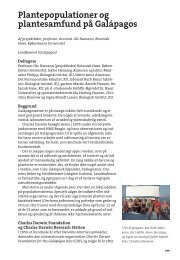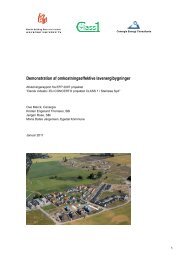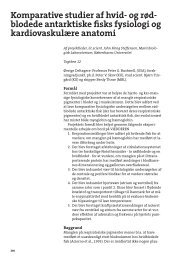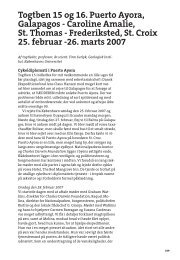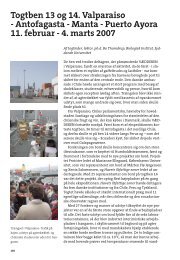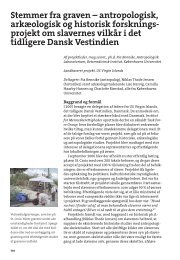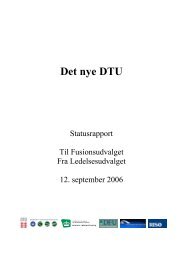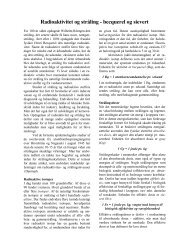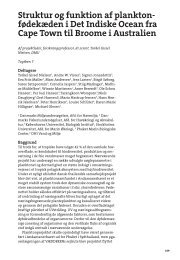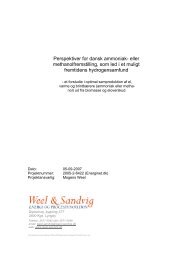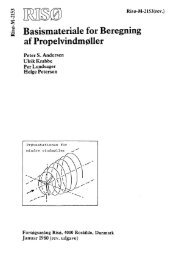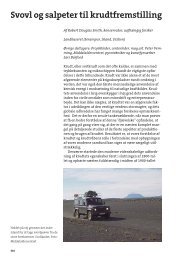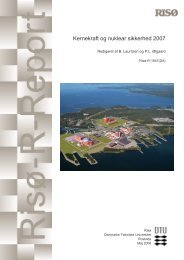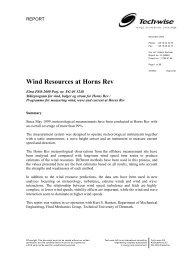Properties of hemp fibre polymer composites -An optimisation of ...
Properties of hemp fibre polymer composites -An optimisation of ...
Properties of hemp fibre polymer composites -An optimisation of ...
Create successful ePaper yourself
Turn your PDF publications into a flip-book with our unique Google optimized e-Paper software.
5 The <strong>hemp</strong> plant<br />
The experimental study <strong>of</strong> <strong>hemp</strong> <strong>fibre</strong> structure (Part 5.2) and chemical composition<br />
including cellulose crystallinity (Part 5.3) are based on investigation <strong>of</strong> the middle<br />
section <strong>of</strong> <strong>hemp</strong> stems from the Felina cultivar cultivated at Danish Institute <strong>of</strong><br />
Agricultural Sciences in 2001 as described in Part 5.1.<br />
5.1 Hemp cultivars and growth<br />
Hemp (Cannabis sativa L., Figure 2) belongs to the <strong>An</strong>giosperm phylum since it has<br />
vessel elements in the woody core (xylem) like hardwood. It belongs to the<br />
eudicotyledons like hardwoods, numerous bushes and herbs, since it has two cotyledons<br />
(i.e. seed leaves). The long and flexible <strong>hemp</strong> <strong>fibre</strong>s are embedded in the bark (cortex) on<br />
the surface <strong>of</strong> the stem.<br />
In Northern Europe, <strong>hemp</strong> plants get 1.9-2.5 m tall dependent on cultivar, sunlight and<br />
weather conditions (Cromack, 1998). In the cultivation experiments at Danish Institute<br />
<strong>of</strong> Agricultural Sciences in 2001, the stems diameter was highest for the cultivars, Felina<br />
and Futura (7-12 mm) and lowest for Finola and Fedora (5-7 mm) (Table 1).<br />
Figure 2. Hemp field with mature <strong>hemp</strong> plants (left). Hemp stem, leaf and plant top<br />
(right).<br />
5.1.1 Cultivation including the experiments at Danish Institute <strong>of</strong><br />
Agricultural Sciences<br />
Hemp originates from Central Asia (van der Werf et al., 1996) but can be cultivated from<br />
the Equator to the polar circle (Vavilov, 1926). In Central Europe, the optimal stem yield<br />
is obtained when the plants are sowed in March. Then the period with maximum daylight<br />
(May-July) will be used fully.<br />
The cultivation experiments at Danish Institute <strong>of</strong> Agricultural Sciences in 2001 were<br />
done at the research site Flakkebjerg <strong>of</strong> The Danish Institute <strong>of</strong> Agricultural Sciences.<br />
The location is 55°20’N, 11°10’E and 0-50 m above sea level. The <strong>hemp</strong> cultivars<br />
Fedora, Felina, Fenola and Futura, were sown May 7 th due to the risk <strong>of</strong> frost in April (



